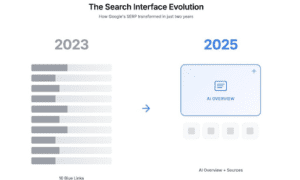Data is the foundation of nearly every smart business move today. From product development to customer experience, companies rely on insights to refine strategies and improve performance. But gaining access to real-time, actionable information isn’t always easy. Most organizations juggle multiple systems, fragmented dashboards, and complex reporting tools. That’s where an embedded analytics platform comes into play. Instead of pulling data into external apps, this solution brings analytics directly into the tools people already use. It blends seamlessly into workflows, making it easier to interpret data without switching contexts. If your team is struggling to make fast, data-backed decisions, read on—you might find the solution in an interface you already trust.
Enabling Smarter Decisions Without Leaving the Application
In traditional analytics models, users must leave their primary application to access dashboards or reports. This disruption creates friction. It slows down workflows, delays decisions, and requires additional training for separate tools. For many business users, this added complexity discourages engagement with data altogether.
Integrated analytics change the game. By placing key metrics, trends, and visualizations within the same environment where users perform their tasks, it removes barriers to adoption. There’s no need to switch platforms, log in to a third-party tool, or learn a new interface. It’s all right there, where and when it’s needed.
For instance, a customer success manager reviewing a support case might see embedded insights about client satisfaction scores or usage trends in real time. A product manager working inside a planning tool might instantly view adoption rates for the latest feature rollout. These micro-moments of insight create better, faster decisions that ripple across departments.
This kind of accessibility turns analytics into a part of everyday work, not a separate task reserved for analysts. As a result, more team members across the organization feel empowered to use data in meaningful ways.
Improving User Experience Through Personalization and Context
Context is everything when it comes to interpreting data. Numbers are just numbers until they’re placed in a relevant scenario. That’s one of the key strengths of built-in analytics: the ability to deliver information within the proper context of the user’s task.
Modern solutions are also highly customizable. Organizations can configure analytics experiences to match the roles, permissions, and preferences of different users. A marketing team might see campaign performance KPIs, while finance users access revenue trend breakdowns. Each team views what’s relevant to them—nothing more, nothing less.
This personalization improves engagement and reduces data fatigue. When users are presented only with the insights they need, they’re more likely to act on them. Visualizations can also be styled to align with the brand and user interface of the primary app, creating a cohesive and intuitive user experience.
When insights are clear, timely, and easy to interpret, users are more likely to explore patterns, ask questions, and experiment with new ideas. In other words, better UX drives curiosity, and curiosity drives innovation.
Streamlining Operations and Reducing Time-to-Insight
Speed matters in business. The faster you can identify trends or spot issues, the faster you can respond. Traditional analytics models often create bottlenecks. Data must be exported, analyzed, and interpreted—sometimes by different departments using different tools.
With built-in analytics, that cycle is shortened dramatically. Decision-makers can instantly view performance metrics, drill into specifics, or generate ad-hoc reports without needing to request support from a technical team. This not only improves productivity but also increases trust in the data itself.
For operations teams, embedded analytics offer new visibility into supply chains, logistics, and service levels. Managers can spot anomalies quickly, react in real time, and forecast future trends more accurately. For customer-facing teams, it enables fast, responsive actions that enhance service levels and satisfaction.
Whether it’s daily check-ins or quarterly reviews, having timely data reduces guesswork and delays. Businesses that can cut time-to-insight gain a competitive edge—and often reduce costs along the way.
Enhancing Product Value and Differentiation
For software providers and SaaS companies, analytics are no longer just a value-add—they’re an expectation. Customers expect to see their data, track performance, and create custom views within the applications they use.
Adding embedded analytics to your product not only meets this expectation but can also be a competitive differentiator. It shows customers that you’re thinking ahead, offering them tools that empower smarter decisions without added complexity.
These analytics features also increase product stickiness. When users rely on your platform for both action and analysis, they’re less likely to switch to competitors. And because they spend more time engaging with the interface, customer satisfaction and retention typically improve.
In many cases, embedded dashboards and reports become selling points. They demonstrate ROI, offer visibility into key activities, and give decision-makers the confidence to scale usage across teams.
For platform owners, this also creates a new monetization opportunity. Advanced analytics features can be tiered into premium plans, driving revenue while offering enhanced value to customers who need it.
Supporting a Data-Literate Workforce
The shift toward data-driven decision-making isn’t limited to analysts or executives. More employees across roles are expected to use data in their daily tasks. But many lack formal training or feel overwhelmed by traditional BI tools.
Embedded analytics lowers that barrier. By bringing insights into familiar environments, they make data less intimidating and more approachable. Interactive charts, intuitive filtering, and user-friendly interfaces make it easier for non-technical users to explore trends and reach conclusions on their own.
This self-service model promotes a culture of data literacy. It reduces the burden on IT teams and analysts, who no longer need to run every report manually. Instead, everyone in the organization has access to the insights they need to make informed choices.
Ultimately, this fosters agility across departments. Marketing can adjust campaigns mid-flight. Sales can respond to real-time performance indicators. HR can review hiring metrics or employee engagement data without delay.
By democratizing data, organizations become more responsive, more aligned, and better prepared for change.
Today’s fast-paced, insight-driven world demands more than static reports and siloed data. Businesses need tools that embed intelligence directly into their workflows—tools that meet users where they already are. Whether your team builds software or operates in a high-performance environment, integrated analytics unlock new levels of clarity, speed, and efficiency. Empowering every team member to make smarter decisions begins by putting the right insights at their fingertips.





























